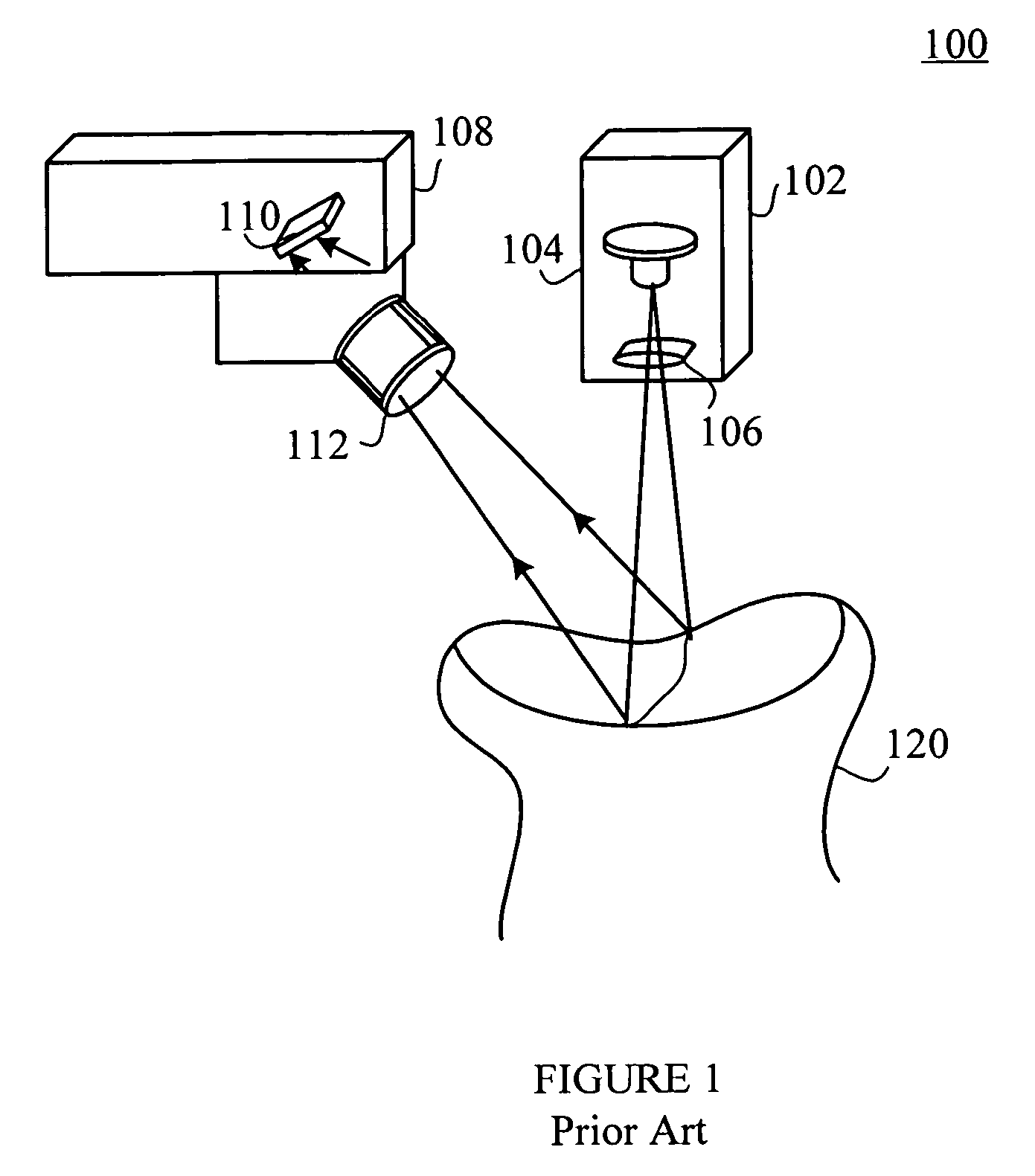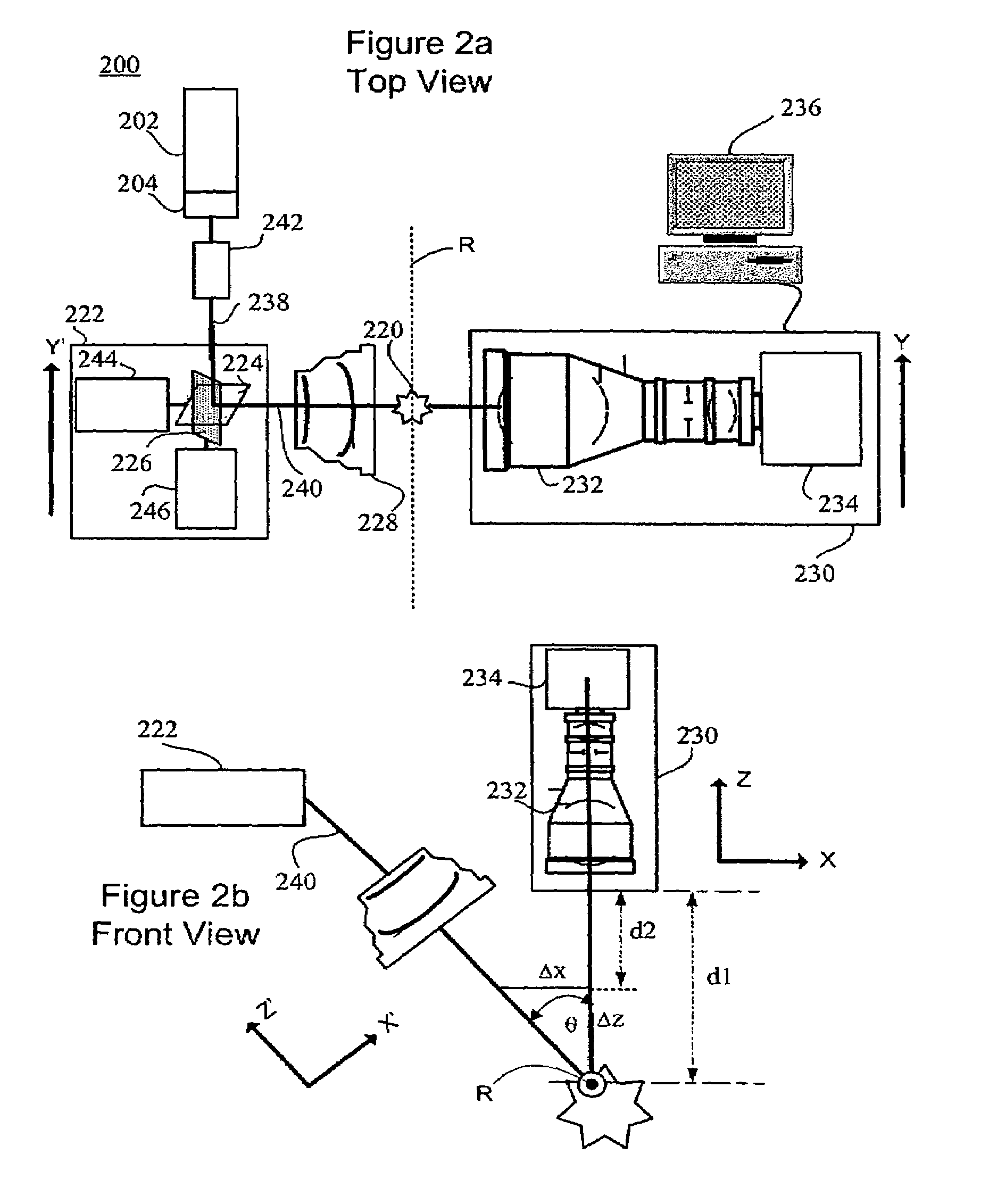Laser digitizer system for dental applications
a digital camera and dental technology, applied in the field of three-dimensional imaging of physical objects, can solve the problems of limiting the speed at which the system may acquire sufficient data to generate a 3d image, inaccuracy of reading the depth of field and uniformity of a line width, and inconvenient operation
- Summary
- Abstract
- Description
- Claims
- Application Information
AI Technical Summary
Benefits of technology
Problems solved by technology
Method used
Image
Examples
Embodiment Construction
[0022]FIG. 1 illustrates an example of a prior art laser line imaging system 100. The prior art laser line imaging system 100 has a transmitter 102 and a receiver 108. The transmitter 102 includes a laser light source 104 and transmission optics 106. The transmitter 102 projects a planar laser light on an object 120 within a field of view of the transmitter 102. The planar laser light incident on the object forms a straight line on the object 120. The projected laser line is produced by either a cylindrical lens or diffractive optical element 106.
[0023]The light reflected from the object 120 is detected by the camera 108. The camera 108 has an optical axis at a known angle to the transmitter 102. The light is picked up by an optical lens 112 which focuses the reflected light onto a matrix of photo-detectors 110. The contour of the object 120 having differences in the elevation can be imaged based on the image projected on the matrix of photo-detectors 110.
[0024]FIGS. 2a and 2b illus...
PUM
 Login to View More
Login to View More Abstract
Description
Claims
Application Information
 Login to View More
Login to View More - R&D
- Intellectual Property
- Life Sciences
- Materials
- Tech Scout
- Unparalleled Data Quality
- Higher Quality Content
- 60% Fewer Hallucinations
Browse by: Latest US Patents, China's latest patents, Technical Efficacy Thesaurus, Application Domain, Technology Topic, Popular Technical Reports.
© 2025 PatSnap. All rights reserved.Legal|Privacy policy|Modern Slavery Act Transparency Statement|Sitemap|About US| Contact US: help@patsnap.com



